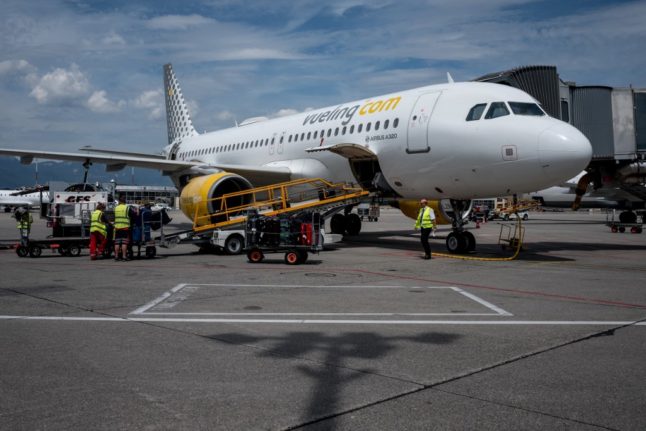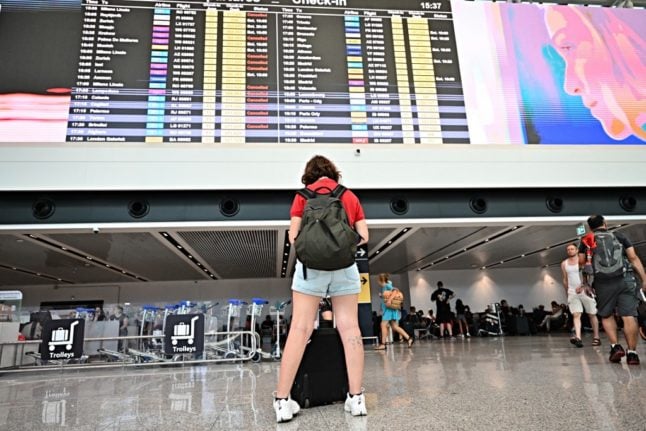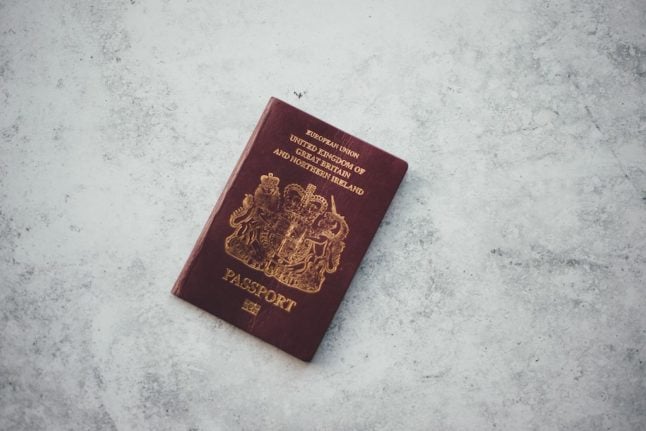Travellers are once again expected to face strike disruption affecting travel to, from and across Italy on Friday, November 11th.
The new round of demonstrations, which threaten to replicate last month’s ‘venerdì nero’ (black Friday), include a 24-hour strike from Vueling staff.
READ ALSO: The strikes set to cause travel disruption in Italy in November
Public tranport strikes will also affect commuters in several Italian cities, though the hours and services affected will vary across the country.
Here’s the latest info on how the planned strikes will impact travel.
Flights
As previously reported by The Local, ground and cabin staff from Spanish airline company Vueling will take part in a 24-hour strike.
At the time of writing, no other carriers appear to be involved in the strike.
Vueling hasn’t confirmed how flights will be affected, but delays or cancellations can’t be ruled out.

According to the latest media reports, the Spanish carrier will guarantee a number of “minimum services” throughout the day but neither Vueling nor ENAC, Italy’s air traffic authority, have provided further details.
That said, in the event of strikes, flights from 7am to 10am and from 6pm to 9pm are usually guaranteed to operate in Italy.
Friday’s strike will be the third demonstration in little over a month for Italy-based Vueling personnel, after the two previous strikes on October 1st and October 21st.
Italian unions representing Vueling staff have said that strike actions will continue until their demands – over greater job security and new agreements over holiday pay – are met.
READ ALSO: What are your rights if flights are delayed or cancelled?
As in previous strikes, those meant to be travelling with Vueling on Friday are advised to check their flight status with the carrier before setting off.
In the event of severe delays or cancellations you might be entitled to compensation. See our guide for further details.
Trains
Local operators in several Italian regions will strike at varying times on Friday.
Train services run by Trenord around Milan, Brescia, Como and surrounding areas will be affected on Friday morning from 9.01am until 1pm, including Milan airport links. See full details here.
In Piedmont Ferrovienord services will be interrupted between 9am and 1pm.
In the southern region of Puglia, Ferrovie Sud Est will join the strike from 5pm-9pm.
Public transport
Aside from the Vueling staff strike, local public transport staff from all over the country are expected to take part in a four-hour national strike called by Italian union USB (Unione Sindacale di Base) earlier this week.
The strike’s start and end times will vary from region to region or, in some cases, from city to city.
In Milan, staff from public transport operator ATM will strike from 8.45am to 12.45pm, with significant disruption expected for both underground (metro lines) and overground (buses and trams) services.

Outside of these hours, services will run regularly, ATM said in a statement.
In Rome, staff from ATAC, the main public transport provider in the capital, will strike from 8.30am to 12.30pm. Further info about the strike can be found here.
In other cities, local public transport staff will strike at the following times, according to Italian media reports on Thursday:
Trieste – 6.30pm to 10.30pm
Bologna and Ferra – 11.30am to 3.30pm
Naples – 9am to 1pm
Bari and Brindisi – 8:30am to 12:30pm
Lecce – 3pm to 7pm
Trento – 11:00 to 15:00
Bolzano – 3pm to 7pm (buses only)
Varese – 3:30 to 7:30pm (Varesine buses)
Pavia – 24 hours
Livorno – 5.30pm to 9.30pm
La Spezia – 11am to 3pm
Rimini, Cesena and Forlì –5.30pm to 9pm.
Strike action in other Italian cities had not been confirmed at the time of writing.
Anyone planning to travel on public transport on Friday is advised to check the status of services in their city before setting off.



 Please whitelist us to continue reading.
Please whitelist us to continue reading.
Member comments